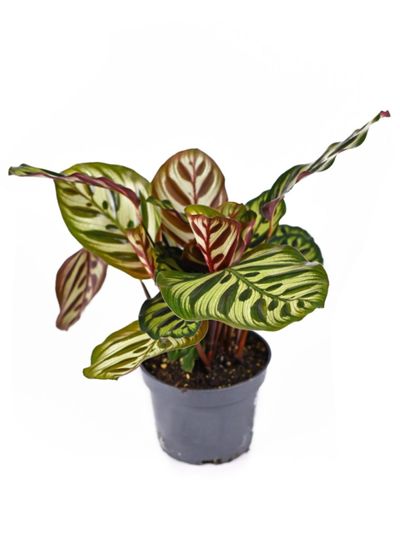How to Grow a Peacock Plant
High humidity at a level of 60 percent or more is needed for the best performance of the Calathea peacock plant. Many varieties of peacock houseplants offer a range of attractive foliage. No matter the cultivar of peacock houseplants you’re growing, providing humidity is the key to optimum performance.
Providing humidity for peacock plant care
Providing humidity for the Calathea peacock plant is as simple as placing bowls of water around the plant. Group peacock houseplants with other humidity-loving plants and the transpiration will offer humidity. A pebble tray located indoors on which plants sit is a good way to provide humidity as well. Frequent misting offers some humidity, but not enough to provide 60 percent in a dry, heated room. Taking care of Calathea peacock can include frequent, lukewarm showers. Use a spray attachment near a sink or actually put them in the shower with other plants that need high humidity. Fashion a humidity tent to use at night, or cover with a cake cover. A humidifier is a good investment when growing peacock houseplants too.
Additional tips for peacock plant care
Start with a healthy plant when learning how to grow a peacock plant. Resist the small nursery plant with browning leaf margins or poor leaf color, as it likely cannot be nursed into a full recovery. Place this plant in a low to moderate light environment. Peacock plant care includes keeping the soil consistently moist. The foliage of the Calathea peacock plant can be damaged by fluoride in water. Collect rainwater for watering peacock houseplants, or use bottled, distilled water without fluoride. Use high nitrogen fertilizer when feeding Calathea peacock plant to avoid pale leaves or brown spots on the leaves. These can also occur when using too much fertilizer high in phosphorus. Leach the soil periodically to remove salts left from fertilization.
